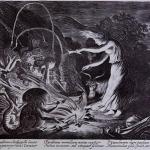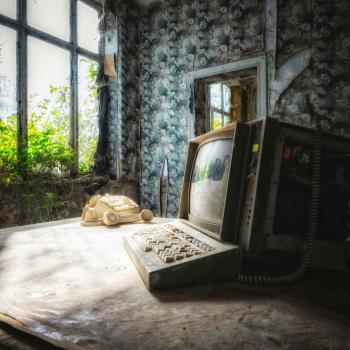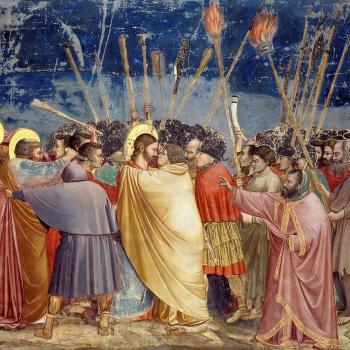Visualisation (or visualization in the USA), is one of those skills that is referred to in a common parlance, dropped into conversation concerning magic, mysticism and the esoteric arts with a frequency that assumes not only understanding but ability. Furthermore, new and aspiring occultists might infer from the regularity of the term that it is a basic ability with which everybody is familiar, that all occultists are capable of conjuring a blue white pentagram before them at will.

Allow me to disavow any newbies to this common and accepted assumption regarding visualisation: the ability to see before you, to conjure an image of a pentagram as you draw it in the air, is one of the most powerful, and technically proficient, arts you will work tirelessly towards. Yet so little is available by way of instruction in how to develop this skill, from Donald Kraig’s Modern Magick, the writings of Crowley, Regardie, Fortune, and many other occult luminaries. People will often refer to visualisation, or infer an ability to perform such, yet very few take the time or effort, perhaps belying inability, to teach such techniques.
When I first met the people who would become my teachers and guides in Wicca, it was emphatically stated that everybody who is trained and enters the circle in their company is capable of ‘seeing’ the pentagram before them in a blue white light as they drew it in the air before them. Among many of the lessons that ensued, the ability to ‘see’ something before you was a required skill. Yet, even now, it has occurred more than once when somebody has indicated to me that this is not something which comes naturally to them, nor is it something of which they are necessarily capable. Therefore, I became intrigued by the phenomenon and techniques by which we are enabled to ‘see’ with our imagination that which others cannot, and which we have summoned ourselves. The good news is that it is not uncommon to lack the visualisation skill and, indeed, it has a name: Aphantasia.
Before we present here a technique which may develop this ability, it is pertinent to explain that we are all capable of visualising and supporting an image within our mind’s eye while simultaneously accessing our optic nerves; that is, to conjure an image before us. You read that correctly: We can all ‘see’ with our imagination while our eyes remain open and our visual sense remains intact. Indeed, it is something we do frequently when we day dream and access our imagination and is a useable facet of our visual and optic sensory toolkit.
When researching how one might go about ‘teaching’ somebody to visualise objects which our regular optic nerves do not present data to our brain for, it becomes immediately apparent that our entire visual representation of the world we see is literally that! What we ‘see’ is, in fact, a creation within our brain from the data our optic nerves receive from light waves. Our eyes receive so much light data that it is impossible for that information to be collated fast enough for our brain to respond. Rather, our eyes present the information received to our brain which creates an image that best fits, often filling in the gaps or replicating scenery, for speed. The most common analogy is old cartoons, such as Loony Toons, which utilised a static backdrop against which moving images lived. In this way, it is often the case that things in our peripheral vision that we take for granted are imagined from memory and may, indeed, have since changed (but are yet regarded as insignificant to our brain in relation to the observable phenomenon). Therefore, all of our vision actually resides within our imagination and is created at high speed by our brains based upon the best information received from the senses, with a heavy focus upon the visual. To clarify: everything we see is created and occurs within our mind’s eye.

All of this is fascinating science, but how does it relate to magic? Well, it enables us to access the core technology of our imagination and manipulate it to not only see the things our senses deliver, but those things that we will to see. And we introduce visualisation techniques. All of this is, of course, more easily said than done and it is now incumbent upon me to introduce a method by which we might develop this skill.
One of the best methods that I have come across is developed by Dr Win Wenger, who specialises in accessing the brain’s capabilities in learning and training. Wenger developed a technique whereby visualisation skills are developed in such a way that we may ‘see’ with our eyes open, based upon the premise that “key portions of our brain don’t distinguish between dream and reality”. This concept works using the idea of neuroscientist Allan Hobson that “as far as neurons are concerned, the brain is both seeing and moving in REM sleep.” That is to say, the technology which we use in our daily lives, and the very apparatus, does not distinguish between what is actually sensed and what we imagine we sense. As far as the actual tool is concerned, both are necessarily true.

This entire concept allows for some room in which we may utilise these in order to better perfect our magics. This is where we introduce Wenger’s technique of ‘Image Streaming’. The method could not be simpler:
Describe an object or surroundings before you out loud and to a recording device, such as your phone or similar. The objective of this exercise is to describe your surroundings, or a simple object (such as an apple), in rich detail. Take the time to explore the describing process, utilising all of the senses. This is very similar to a mindfulness technique and might be a reason why mindfulness is known to enhance Samadhi experiences. So the first step is to describe something that is before you to a recording device. The idea is that this creates a feedback loop whereby your brain receives detail and information, which it automatically uses in its representation, which then you witness through your senses and describe anew.
After a few days of describing an object or surroundings that are immediate, begin to describe a scene or item with which you are particularly familiar, but which is not present before you. Now, you are starting to use the muscle you have been developing to introduce the imagination as a vital part of the sensory experience. Continue to practice this simple technique, doing several days of describing something that is present, followed by a few days engaged with something that is familiar but not present.
When you have been practicing this technique for a while, you may begin to ‘see’ spontaneous images, or receive details of something ‘other’ than that which your attention is focussed. When this occurs, try to allow it to pass with observation only and record what you ‘see’. The more you practice this technique, the more the ‘muscle’ will become strengthened and you will begin to develop the ability to not only ‘see’ those things before you which you summon, but you may begin to ‘receive’ a sense of the ‘other’.



















